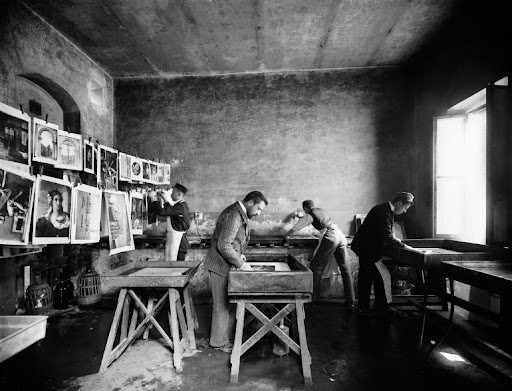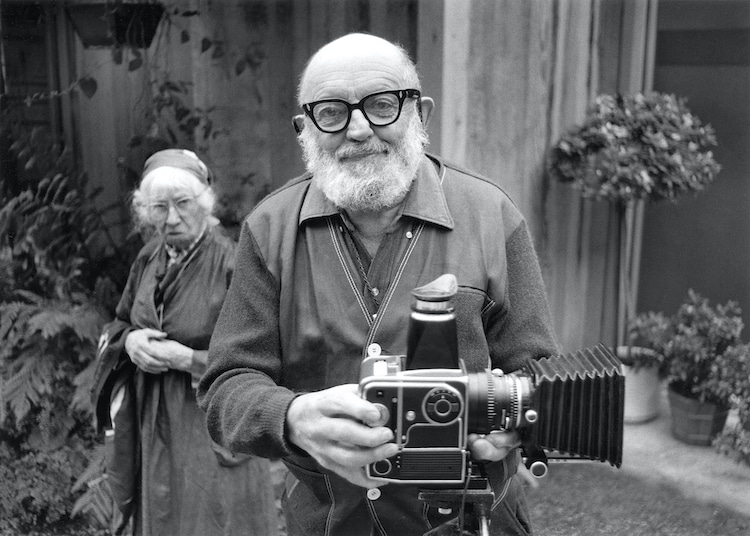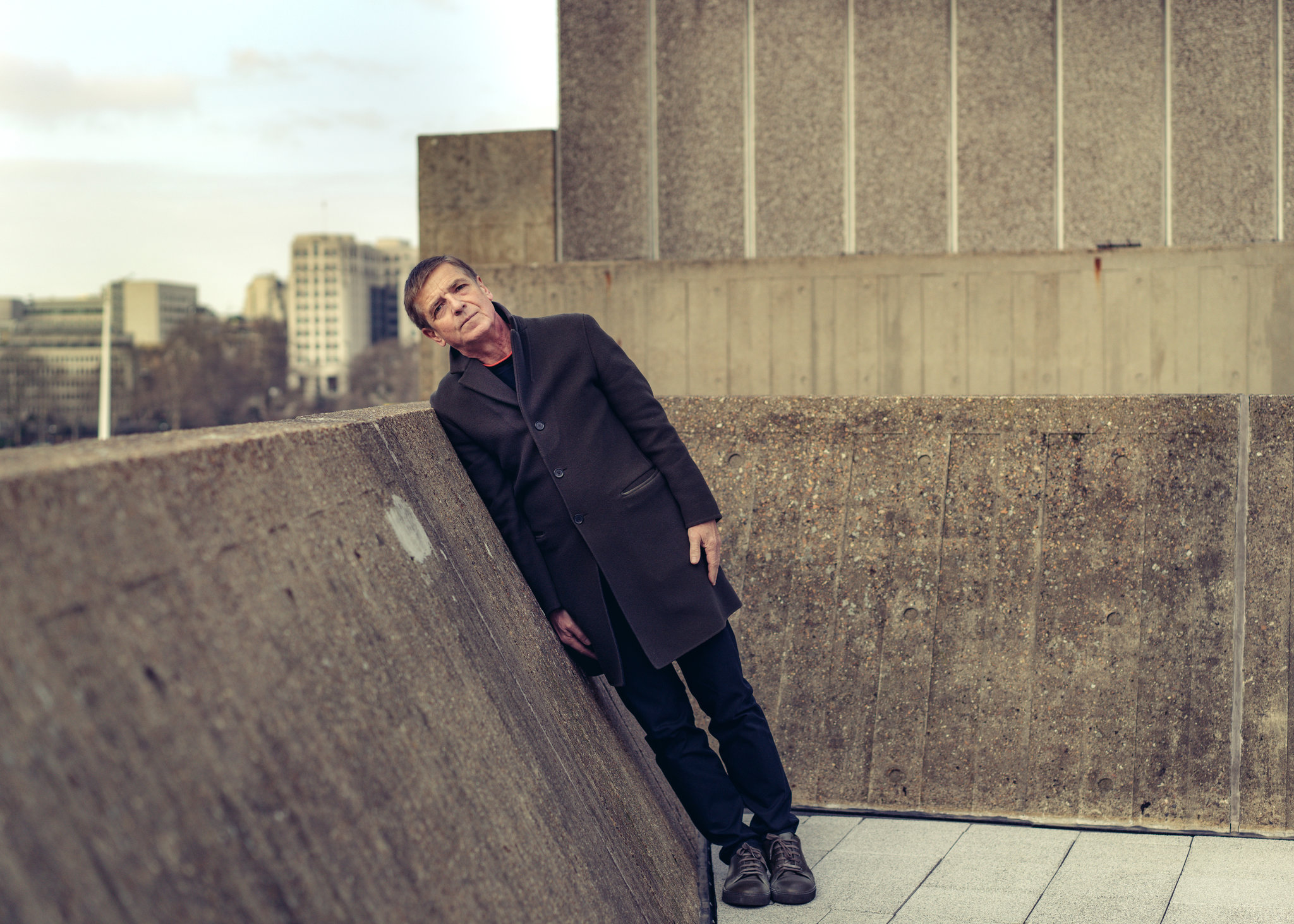History of the first photographer
The first known photographer was a Frenchman named Joseph Nicéphore Niépce. He invented the photographic process in 1826. His process involved coating a photosensitive surface with a light-sensitive chemical and then exposing it to an image projected from a lens. The image would then be developed using chemicals.
The first photograph ever taken was of a view from Niépce's window. The photo, called View from the Window at Le Gras, was taken in 1826 or 1827. Niépce partnered with Louis Daguerre in 1829 to improve his photographic process. Daguerre eventually developed the daguerreotype, the first commercially successful photographic process.
Famous photographers throughout history
Photographers of the 19th century
The first photographers of the 19th century were primarily interested in recording landscapes and architecture. Their images required long exposure times, though, making photography a challenge.
Robert Adamson
He was born in Scotland. He was considered one of the finest artists in all of Scotland. Adamson used his talents to paint watercolors that he would then expose onto glass coated with photosensitive chemicals, creating a positive image. Because the exposure time needed for this process was so long, Adamson painted one side of a rock and let it dry before turning it and painting the other face—a time-intensive process that required great patience and perseverance.
Amédée Forestier
He was known as an adventurous traveler within France who enjoyed recording what he saw through photographs. His early experiments with photography were difficult because of the limitations posed by its slow exposure times, but he eventually received funding from King Louis-Philippe I to photograph historic monuments in Paris.
Giuseppe Alinari and Leopoldo Alinari

They were born in Italy and started a photographic studio in Florence in 1852. The brothers are credited with introducing photography to the art world, and their studio became one of the most successful commercial photography businesses of the 19th century.
Felice Beato
He was born in Venice but spent most of his adult life in Asia. He is considered one of the first war photographers, having documented conflicts in Crimea, China, and Japan.
Ottomar Anschutz
He was a German photographer who is credited with developing the first color photography process. This was a very difficult task because the world's only source of color photos was from three-color separation processes that were impractical for commercial applications.
The idea went to his mind when he saw a travel poster of the Grand Mosque of Istanbul. He decided to try to create color photos using three images taken through red, blue, and green filters. After a lot of attempts, he finally succeeded in 1891. This invention revolutionized color photography.
Eadweard Muybridge
He was born in England and moved to the United States as a child, where he later became a photographer of wildlife and landscapes. In 1872, he partnered with Leland Stanford, a former governor of California, to settle an ongoing debate between animal locomotion experts who could not decide whether all four hooves of a horse were off the ground during its running stride.
Using multiple cameras connected to tripwires that would take photos at fractions-of-a-second intervals as horses galloped by, Muybridge proved that they do indeed leave the ground for short periods. He also captured other animals in motion. For these images and his innovative camera equipment design (he is credited with inventing the zoopraxiscope, a device used to project motion pictures), Muybridge is considered one of the fathers of photography and cinematography.
George Eastman
He was born in upstate New York and, at a young age, became interested in photography after taking pictures of his family with a camera lent to him by an uncle. After leaving his job as a bank clerk, Eastman set up a photographic supply business in Rochester, NY, and developed the first Kodak camera. This camera was easy enough for anyone to use and came with a roll of film that could be sent to the company for processing and printing.
In 1870 George Eastman invented flexible photographic film which made photography an activity accessible to average people. After this point, photos began to be taken by handheld cameras capable of taking many shots quickly. Photography became a common means of entertainment as well as documentation.
Photographers during WW I and WW II
During World War I, combat photographers took pictures of soldiers from all sides while fighting was going on around them. The most famous example is from 1916 when Joe Rosenthal took his now-iconic photo "Raising the Flag on Iwo Jima".
Ansel Adams

He was born in San Francisco and spent most of his life in California, where he became a renowned photographer. He is mainly known for his landscape photos, which often show scenes from the American West.
He also wrote books about the art of photography and photographic techniques and equipment. His work has inspired millions of photographers, drawn millions of visitors to public photography exhibitions, and contributed greatly to the development of American culture in relation to nature and wilderness preservation.
Dorothea Lange
She was born in Hoboken, New Jersey but lived most of her life in California. She is best known for capturing images related to the Great Depression with their downtrodden subjects living among dust bowls or camping in shantytowns. Her photos were published in several publications and helped bring international attention to the poverty caused by the economic crisis during this period. Some of her more famous images include "White Angel Bread Line," "Destitute pea pickers in California," and "Migrant Mother."
Henri Cartier-Bresson
This photographer was born in France and is considered the father of street photography. He is known for his candid photos of people in everyday situations, as well as for his compositions and use of light.
In his early years, Cartier-Bresson became deeply involved with Communism and worked as a member of Leon Trotsky's secret service in Paris before switching allegiance to the Communist Party. He began working as a photojournalist after World War II and became a master at candid photography. His work from this time period is sometimes considered some of the greatest ever
Many of his photos were taken in France, but he also photographed other parts of the world, including India, Mexico, and the Soviet Union. After retiring from photography in the 1970s, Cartier-Bresson founded Magnum Photos, a cooperative agency that represents some of the world's best photojournalists.
Robert Capa
This photographer was born in Hungary but lived most of his life in Paris. He is best known for his war photography, having covered several major conflicts including the Spanish Civil War, World War II, and the First Indochina War.
In addition to his work as a photojournalist, Capa was also a founding member of Magnum Photos. After he died in 1954 (he stepped on a landmine while covering the war in Indochina), it was revealed that many of his photos had been staged or fabricated. Despite this, his legacy as one of the greatest combat photographers of all time remains intact.
Olive Edis
This photographer was born in England and is best known for her photographs of women. She often photographed women who were considered unconventional or taboo at the time, such as pregnant women, women working outside the home, and women in the armed forces.
Edis also took a keen interest in photojournalism, documenting life during World War II and the postwar period. After she died in 1988, her work was largely forgotten. However, there has been a recent resurgence of interest in her photography and she is now considered an important early feminist photographer.
Famous modern photographers
Many contemporary photographers focus on photographing current events with a journalistic eye. Notable examples include Kevin Carter, who won a Pulitzer Prize in 1994 for his photo depicting a vulture stalking a starving child in Africa; and Jim Hubbard, whose book "Open See" documents humanitarian crises around the world. Other artists use photography as a medium to explore identity or create surrealist dreamscapes from places where they never existed before.
Andreas Gursky

This photographer is known for his large-scale photographs of banal subjects such as landscapes, cityscapes, and industrial architecture. His work often challenges the viewer's perception of scale, and he has been praised for his ability to create a "sense of place."
Gursky is one of the most expensive photographers in the world, with some of his prints selling for millions of dollars. He has been exhibited in some of the most prestigious museums around the world, including the Museum of Modern Art in New York and the Tate Modern in London.
Cindhris McCaw
This photographer is known for her self-portraits, which often depict her in a range of costumes and makeup to create satirical or subversive images. Many of her photos explore the role of women in society, as well as the representation of women in the media.
Sherman has been exhibited in numerous solo and group exhibitions throughout her career, and her work is held in the collections of several major museums, including the Museum of Modern Art in New York and the Tate Modern in London.
Hiroiroshi Sugimoto
This photographer is known for his black-and-white photographs of landscapes and seascapes. He often captures the ephemeral nature of these subjects, using long exposure times to create an ethereal or otherworldly effect.
Sugimoto's work has been exhibited in major museums around the world, and he has also created several short films and feature-length documentaries. In 2009, he was made a Chevalier de l'Ordre des Arts et des Lettres by the French government.
Other famous photographers
Other well-known photographers include Berenice Abbott, who was best known for her photographs of New York City in the 1930s; Dorothea Lange, who is best known for her photographs of the Great Depression; and Simon Norfolk, who is known for his large-format landscape photography.
Today, photographers often specialize in a particular subject or style of photography. For instance, fashion photographers focus on photographing models wearing clothes from famous designers. Celebrity portrait photographers take pictures of popular film stars and other celebrities for magazines and newspapers.
Sports photographers cover games, races, and other sporting events to sell to media outlets such as Sports Illustrated magazine. The list goes on!
Final words
Photography has become an incredibly diverse art form, with something to offer everyone who enjoys looking at pictures. Whether you appreciate a well-composed landscape or are fascinated by the strange and beautiful aspects of everyday life, there is sure to be a photographer whose work speaks to you.
So next time you're feeling inspired, take a look at some of the great photographers out there and see what they've been up to lately. You might just find your new favorite artist.